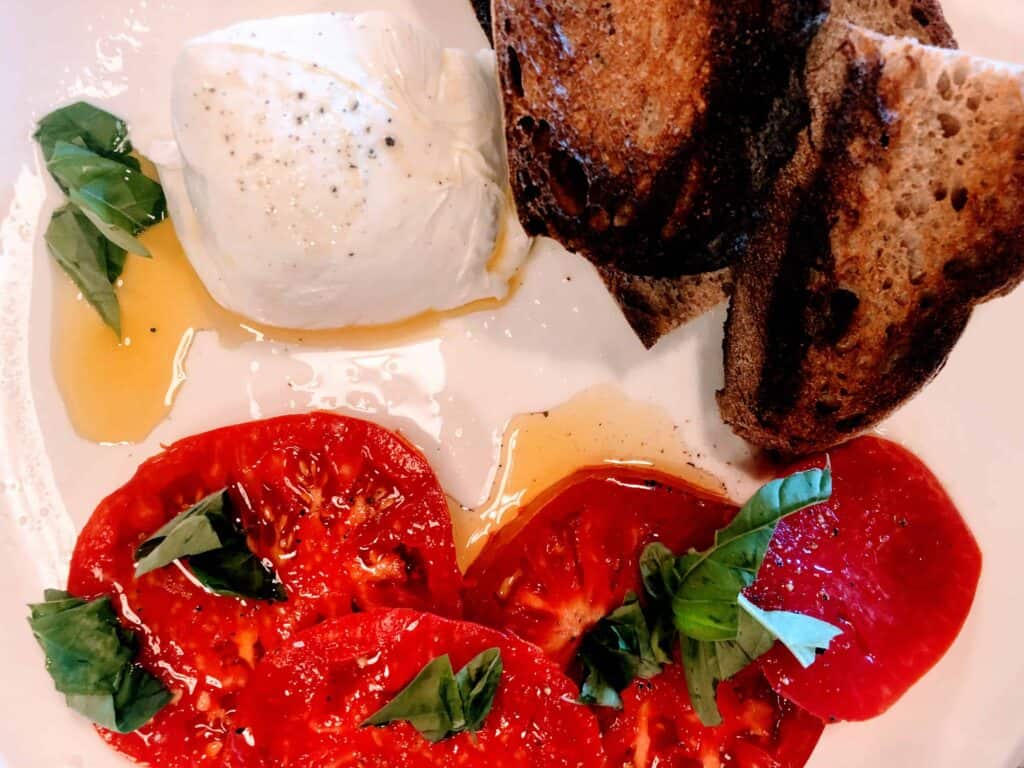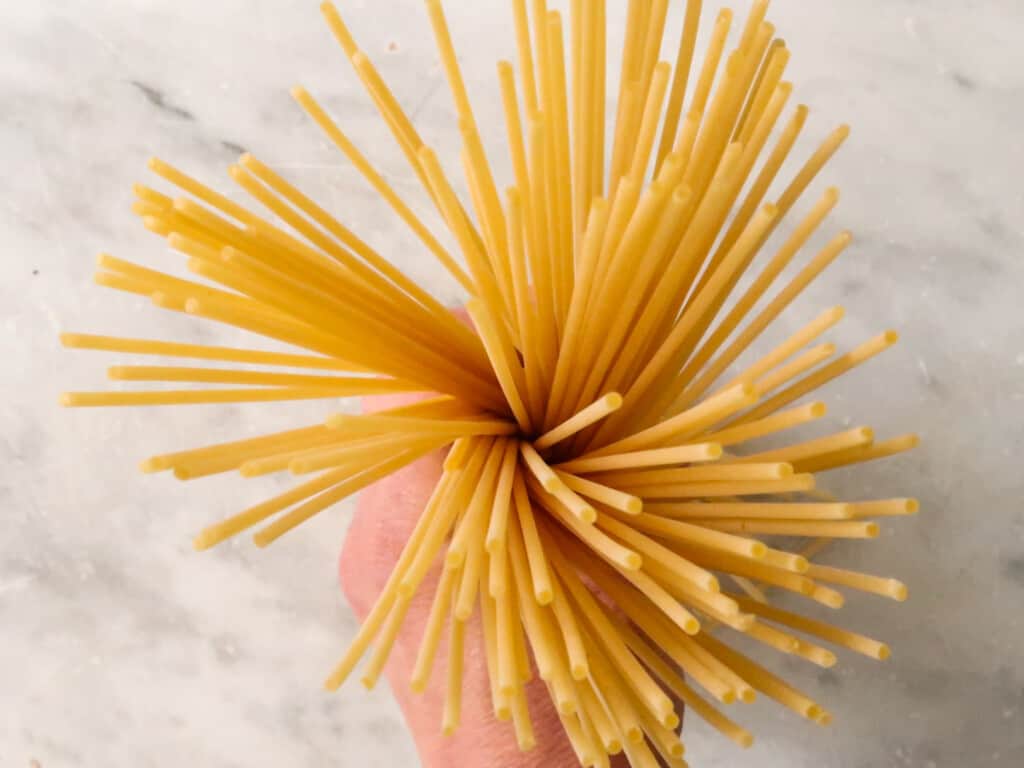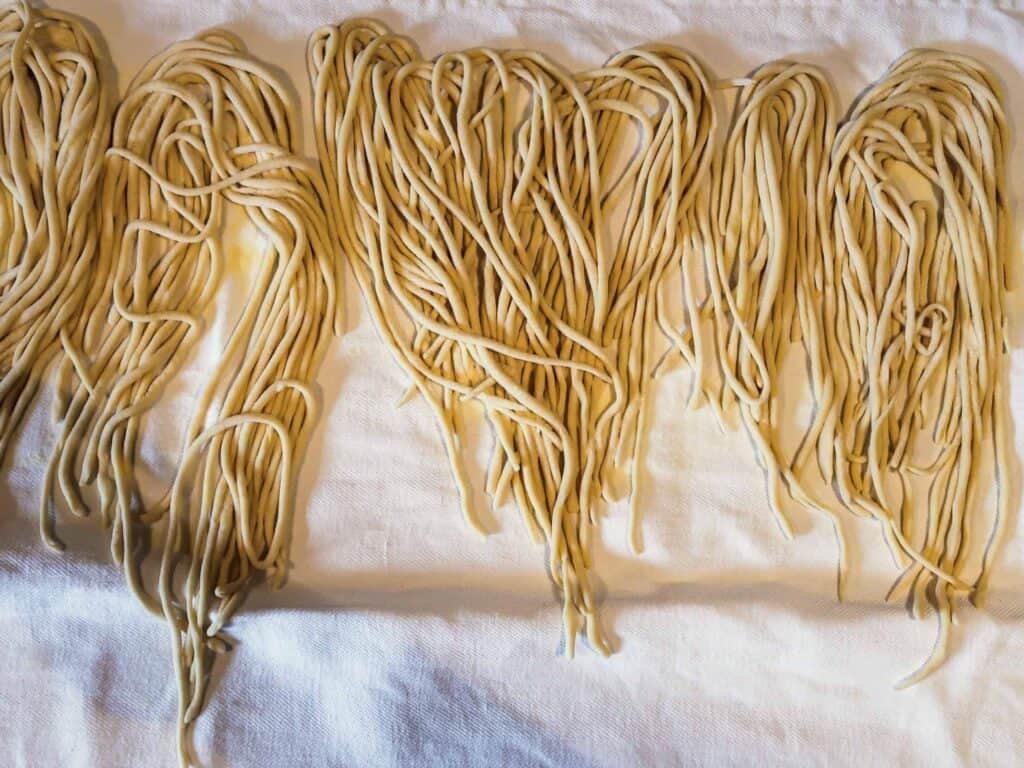Last updated on April 17th, 2024
Most of us know and love the most popular Italian cheeses such as parmesan, mozzarella and provolone – but what about all the others?
Did you know Italy produces over 400 types of cheese and consumes over 48 pounds (22 kg) of cheese per capita? That’s a heck of a lot of Italian cheese.!In fact, about 70% of Italy’s milk production goes into cheese-making.
Italy makes some of the best cheese in the world with 48 DOP certified varieties throughout the peninsula. How many will you try on your next trip to Italy?
Today let’s go through:
- how to say, pronounce and order cheese in Italian
- the most popular cheeses in Italy
- where to eat Italian cheese
- how best to enjoy Italian cheese
- my comprehensive list of regional Italian cheeses
Nice To Know: There is no other food than cheese than embraces the Italian philosophy of KM0, or chilometro zero, the ideal of sourcing food as locally as possible, most times regionally, helping to preserve sustainable practices, freshness, seasonality, quality and biodiversity. The art of cheese making in Italy speaks to this practice perhaps more than any other!
Jump to Section
How To Say Cheese In Italian

There are actually two words for cheese in Italian: formaggio and cacio. Formaggio is certainly more common while cacio is used regionally (more in Southern Italy). Both are derived from Latin.
The word formaggio comes from the Latin word forma, meaning shape or mold, referring to how the cheese was (and is still today) shaped.
How To Pronounce Formaggio
Formaggio is pronounced fohr-MAHJ-joh in Italian.
Listen to the pronunciation of formaggio here:
Italian Pronunciation: It’s not easy. Formaggio is just one of many difficult-to-pronounce food words in Italian. For more help with pronunciation read 36 Most Commonly Mispronounced Italian Foods – Speak like an Italian 101.
How To Buy Cheese In Italy

It’s very easy to get your hands on really good Italian cheese while visiting.
Cheese is sold by weight in Italy, particularly in grams. For example, you might order 200 grams of pecorino at the deli counter which amounts to about half a pound. It’s also common to order cheese by 100 gram increments or etti (100 grams = 1 etto, 200 grams = 2 etti).
If you would like to order Italian cheese that is not already weighed and priced. Say:
Vorrei 200 grammi di pecorino semi stagionato, per favore.
I would like 200 grams of semi-hard pecorino, please.
Fact: A wheel of cheese is called una forma di formaggio in Italian.

For higher quality (such as DOP cheeses) and local cheese head to a negozio di formaggio or a caseificio (where cheese is produced and sold).
Fact: DOP stands for Denominazione di Origine Protetta (also known as PDO or Protected Designation of Origin in English). It’s a certification or labl given to cheese that is produced in a certain way, according to strict, traditional guidelines of production and linked to a geographical location of origin.
For a wider selection, any large Italian supermarket will be well stocked. You can also go to any alimentari, minimarket or pizzicheria (deli) to find a local selection of regional cheeses.
Consistency and Flavor of Italian Cheeses
Sharp Italian Cheeses
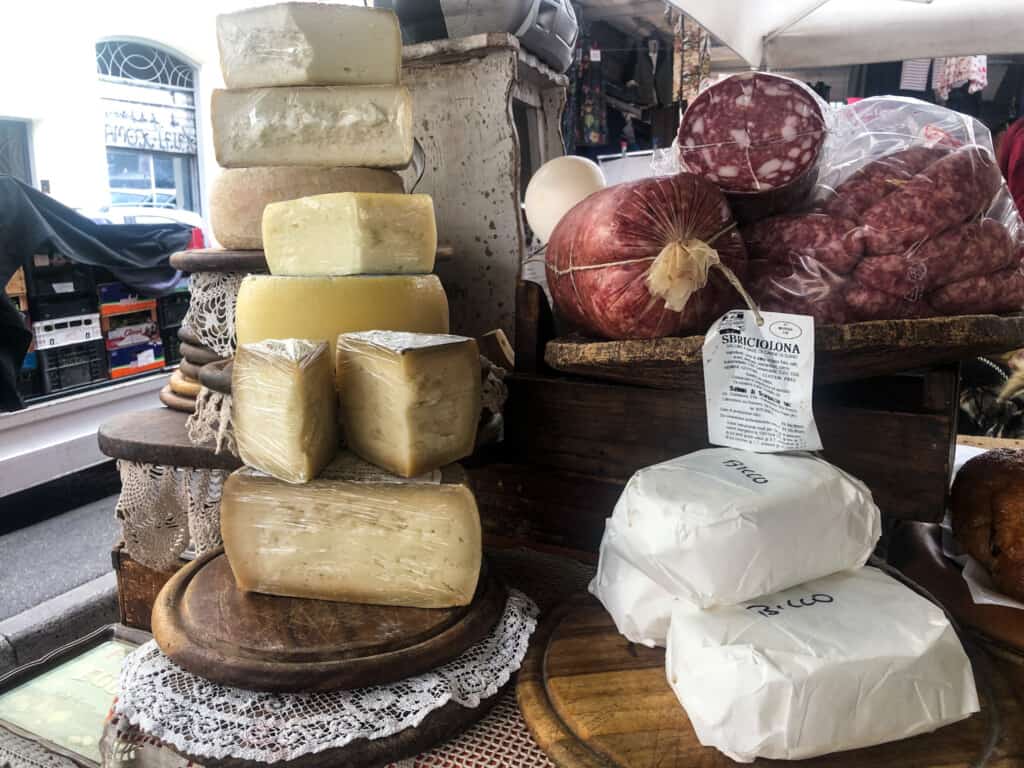
Sharp Italian cheeses mean that they have been aged for a longer time period, making for a stronger, more pungent cheese such as aged gorgonzola, aged provolone, aged pecorino or parmigiano-reggiano.
Good To Know: Sharp cheeses refer to cheese that has been aged a long time. They are going to pack a punch so you won’t be eating quite as much as milder cheeses.
Generally speaking, the longer a cheese has been aged, the sharper it’s going to be.
Creamy Italian Cheeses
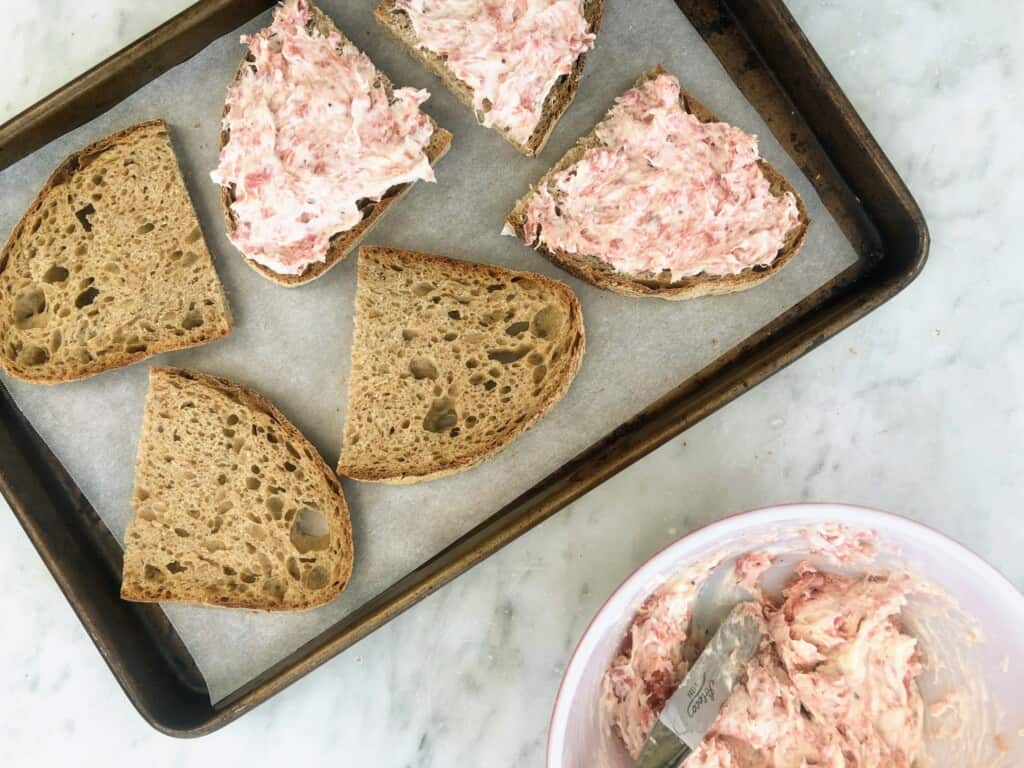
The creaminess of a cheese will depend on how the cheese was produced, the amount of cream (as opposed to milk used), and the type of milk used to make it. For example, sheep and goat milk are usually higher in fat and thus, produce richer and creamier cheeses. Ricotta, as another example, made from cow milk, although soft, is not particularly creamy.
Creamy Italian cheeses are generally more mild and less pungent.
Italian Cheeses From North To South
Northern Italian Cheeses
The regions of Lombardy, Trentino-Alto Adige, Piedmont, and Valle d’ Aosta (Aosta valley) in Northern Italy are all particularly known for their semi-hard or aged cheese such as fontina, taleggio and gorgonzola. The mild climate, lush pastures and vast mountain ranges are perfect for breeding cows of the best quality. Not only can you find some of the best quality cheese here but the dairy in general is considered the best in Italy.
Italian Cheeses In Central Italy

Emilia Romagna, Tuscany, Umbria, Abruzzo, Marche and Lazio make up what we call Central Italy. You could also add the island of Sardinia to this category. Best known for their sheep’s milk cheese from Lazio, Tuscany and Umbria, the king of all, parmigiano-reggiano, and the ever more popular provolone are central to the cheese making tradition and industry.
Southern Italian Cheeses
Southern Italy is much more famous for their fresh or soft cheeses such as mozzarella di bufala and ricotta. These two are just the tip of the iceberg as cheese making and eating is almost a religion down south. The famous water buffalo is certainly what we all remember most about the South but sheep’s milk and semi-hard cheeses are also a refined skill and artform among the locals.
DOP Italian Cheese

No matter where you are in Italy, each region produces their own DOP certified cheese, a certification made to ensure the integrity of the cheese making process, the quality and the taste as set forth by strict guidelines laid out by the Italian government.
For example, mozzarella di bufala DOP can only be made in certain provinces of southern Italy with certain types of milk from a specific breed of cow, eating a strict diet and produced and packaged in a specific way, following the original, traditional methods of production.
Tip: To be sure you are eating authentic Italian cheese, be sure it’s labeled with a DOP status, ensuring that it was actually made in the original way and not an imitation cheese!
Italian Cheese By Milk Type

Italian cheese is made with either cow, sheep, goat, buffalo milk (or a combination of), depending on the province of the cheese.
Cow’s Milk Italian Cheese
Italian cheese from cow’s milk or latte di vacca are known as vaccini. Vaccini are more common in Nothern Italy where the climate and landscape is ideal for raising cattle.
Sheep’s Milk Italian Cheese
Italian cheese from sheep’s milk or latte ovino is called pecorino. Pecorino cheese is produced throughout central and southern Italy, including Sardinia and Sicily where sheep herding plays a large role in the local economy. It’s one of my favorite food souvenirs to bring back from Florence and elsewhere in Tuscany.
Goat’s Milk Italian Cheese
Italian cheeses from goat’s milk are called caprini. Many Italian caprino cheese is made with a mixture of goat’s and cow’s milk. It’s beloved throughout the entire Italian peninsula but particularly popular in Abruzzo, Calabria, Liguria, Molise, Piedmont and Trentino.
Buffalo Milk Italian Cheese

Italian cheese from buffalo cows is called bufalini. These cows are raised primarily in southern Italy where mozzarella di bufala is made.
Mixed Milk Italian Cheese
Italian cheese made from a combination of milk is known as misto latte or mixed milk cheese. The mixing of the milks is not random but rather, done according to specific proportions to obtain a certain flavor, consistency or yield.
Fact: Certain types of Italian cheeses can differ significantly by the types of milk used. For example, mozzarella di bufala (made from buffalo milk) has a very grassy, rich taste when compared to fior di latte mozzarella (made from cow’s milk), which is rather mild and ‘plain’ in comparison.
Most Popular Types Of Italian Cheese
Soft Italian Cheese
Soft Italian cheese is known as formaggio fresco in Italian. They are ideal for melting, baking and spreading on crostini, Italian soft cheese is some of the best in the world.
Fact: Fresh Italian cheese needs to be consumed generally fairly quickly, anywhere from within a few hours of production to several weeks.
Mozzarella di Bufala

Best For: Eating raw in salads such as un caprese, with a glug of olive oil or on pizza.
Mozzarella di bufala is one of Italy’s most prized fresh cheeses made from the water buffalo milk. Originally from Campania, mozzarella di bufala is a DOP cheese made also in Puglia and Molise.
Mozzarella di bufala comes in many shapes and sizes but they are all white and creamy with a slight spring to them as you bite down.
Good to Know: Mozzarella without di bufala on the label is going to be made from a different cow’s milk, not buffalo cow milk. This mozzarella is called fior di latte.
Fresh buffalo mozzarella should be eaten within hours of production. The fresher the better and it should NOT be refrigerated under any circumstance because it changes the flavor and texture. Some producers say you shouldn’t eat it past 48 hours of production but in my experience, you certainly can. For a full explanation on how mozzarella di bufala is made, read What is Mozzarella di Bufala (Buffalo Mozzarella)? – Solving the Great Italian Mystery
Mozzarella di bufala should not be cooked at all and eaten raw. If it’s added to pasta or pizza it will be done after the cooking process, right before serving.
Storing Mozzarella: If you get your hands on fresh mozzarella di bufala, store it in its brine at room temperature until you are ready to eat it.
Burrata

Best For: Consuming raw as an appetizer or second course with vegetables, bread and olive oil.
Burrata is a soft, white, creamy Italian cheese from Campania made similarly to bufala mozzarella but with the addition of cream. How bad could that be?
From first glance, burrata looks the exact same as mozzarella di bufala but once you cut into it, the creamy, runny inside will start oozing out.
Burrata is another cheese that is best within hours of production. For our recommendations on where to go to see how burrata and other buffalo cow cheese is made, read What is Mozzarella di Bufala (Buffalo Mozzarella)? – Solving the Great Italian Mystery
Stracciatella

Best For: Enjoying raw with fresh bread, spread onto toasted bread or stirred into already prepared pastas and other first course meals.
Essentially, stracciatella is burrata that has been chopped up or shredded. In other words, it’s mozzarella that has been shredded, mixed with cream and served with a spoon.
Fact: Stracciatella is also the name of one of Italy’s most famous gelato flavors, named for the streaks of chocolate running through the fiordilatte gelato.
Ricotta

Best For: All uses including desserts (cannoli, gelato, chocolate ricotta cake), baking, first courses, flans, souffles, tarts and spread on crostini.
Ricotta is actually a by-product of Italian cheese made from the whey (watery liquid left over from when cheese is made). Ricotta, originally from Sicily and made with sheep’s milk, is today produced made throughout Italy from cow, goat or sheep’s milk.
Ricotta is made by re-cooking the leftover whey and straining the curds out, which then firm up into a smooth, spreadable, mild cheese. It’s, thus, considered one of Italy’s most versatile cheeses as it can really be used for anything from appetizers to main course and desserts (like the Italian classic – torta di ricotta e limone). It’s also a very common snack for kids to eat on bread or with Nutella.
Good To Know: Most ricotta found outside of Italy is made from cow’s milk. While in Italy, be sure to try ricotta di pecora (sheep’s milk ricotta), which has much more of a pungent and grassy taste then ricotta di mucca (cow’s milk ricotta).
Mascarpone

Best For: Making desserts
Mascarpone is a soft cow’s milk cheese from Lombardy that is smooth and creamy. It’s actually made with more cream than milk, making it almost sweet, perfect for baking and adding to desserts such as tiramisù and serving with panettone.
Cook With It: Try my recipe for Mascarpone Cream.
Robiola
Best For: Eating fresh as an appetizer, on sandwiches or stirred into risotto, pastas or polenta.
Robiola is the umbrella category of fresh cheese from Piedmont made from cow, goat or sheep’s milk (or a combination). It’s creamy and buttery with a melt in your mouth consistency that can’t be beat.
Toma is notably the most famous and prized robiola produced in Piedmont, gaining a DOP certification. Toma is aged anywhere from 15-60 days and as it ages, the spicier and tangier it gets. When fresh, it’s rindless and melts in your mouth but as it ages, it develops a thin rind that is 100% edible.
Good To Know: Robiola is pretty easy to find outside of Piedmont but toma is not as common. When in Piedmont, get your hands on toma because this DOP cheese won’t be easy to come by and almost impossible to find overseas.
Stracchino
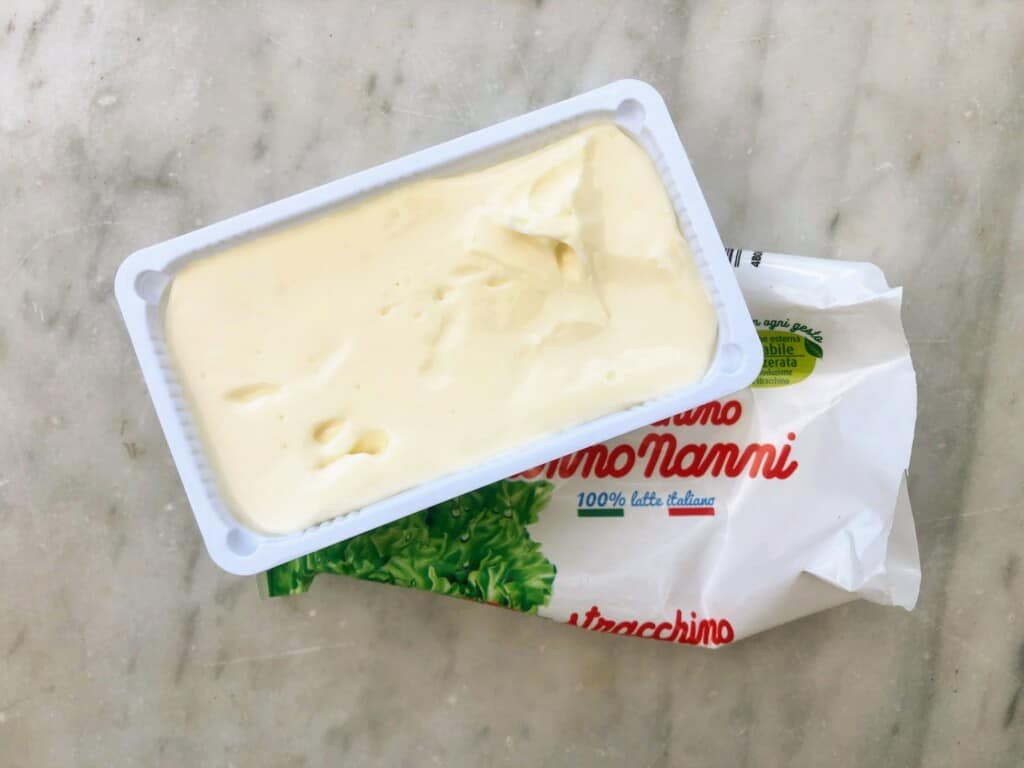
Best For: Spreading onto crostini, stirred into pasta or risotto or served with prosciutto and fried bread known as coccoli in Tuscany.
Stracchino can be found throughout Italy but it’s most popular in Lombardy, Piedmont, Veneto, and Liguria. It’s a very soft, creamy cow’s milk cheese, often confused with crescenza, a similar cheese that is aged for only a week and made with both whole and part-skim milk.
The name comes from the local dialect in Lombardy, stracch meaning ‘tired’, referring to the milk that was taken from the tired cows coming back a day out of grazing in the summer heat.
We also use this cheese a lot in Tuscany to make crostini, spread it on sandwiches or eaten as an appetizer with cured meats.
Semi-Soft/Semi-Hard Italian Cheese
Semi-stagionato refers to semi-hard cheeses or medium-aged Italian cheese that falls somewhere between a fresh cheese and hard cheese. It’s not going to grate super well like a parmigiano-reggiano yet it won’t spread well like a mascarpone.
Note: Many of the Italian cheeses listed in this semi-soft category can also be found fresh or even in aged varieties.
Provolone

Best For: Aperitivo, sandwiches, first course pastas and baked first course dishes such as gnocchi alla sorrentina.
Originally from Basilicata, this cow’s milk cheese is now a staple throughout the entire Italian peninsula. Italian provolone is nothing like the stuff you are used to getting in the US.
Provolone is made from mozzarella that is washed in brine and oil and hung to age or dry until hard. Sometimes you find it shaped as a ball, other times as a long log.
You will find it shaped into various forms and sizes and also aged for different periods. When only aged a few months, it’s mild and light but maturation periods upwards of a year, lends a more sharp, pungent provolone.
Good To Know: Provolone is also known as caciocavallo in Italian.
Gorgonzola

Best For: Stirring into rice and polenta or eating with a cocktail for aperitivo or as a dessert with fruit and a sweet wine.
Gorgonzola is for all you stinky cheese lovers out there. It’s a blue cheese, characterized by veins of blue mold running through it. Today, gorgonzola cheese is made by injecting a bit of ‘mother’ mold into the cheese wheels but back in the day, the mold was a natural result of the aging process in caves.
Cooking Tip: Use the gorgonzola dolce or sweet variety for melting into pastas, gnocchi, rice and polenta. It has a creamy texture similar to brie that melts beautifully. It’s also a key ingredient in Italian Kale Salad with Gorgonzola.
It’s a cow’s milk cheese from Lombardy made in two ways. The first is dolce, or a sweet version, that is mild, softer and relatively fresh when compared to the piccante or spicey version that is aged longer, has a more pungent flavor and is more crumbly.
Fact: Today, 65% of gorgonzola is produced in Piedmont.
Fontina

Best For: Melting into polenta, making fondue or consuming as is with a glass of wine.
Fontina is a DOP cheese from the Aosta Valley. It’s considered one of the best cheeses from northern Italy and lucky for foreigners, exported all over the world. It’s a semi-cooked cheese aged for up to three months made from raw milk of the Valdostana Pezzata Rossa cow, a breed that is reared locally on the lush fields and pastures of the north.
For Pregnant Travelers: Stay away from raw cheeses such as fontina and mozzarella. Read more about Eating in Italy While Pregnant – From a Mamma of Four in Italy and Eating in Tuscany While Pregnant – From a Mamma of Four in Florence.
Taleggio

Best for: Melting into first course dishes such as northern staples like risotto and polenta.
Although seemingly a very stinky cheese, taleggio is a relatively mild DOP cheese from Lombardy with a strong smell but delicate flavor. The cheese is encased in a soft, yellowy-orange crust that is 100% edible (although some people like to remove it) that is washed in a salt-water solution every week during its maturation period.
Serving Tip: Let taleggio (like all other cheeses) come to room temperature before serving which helps to bring out the various notes and layers of flavors.
Did you know cheese is also seasonal in Italy? Well it is! Each Italian cheese has a certain time of year when it’s made at its best. Taleggio is most traditionally made in the fall and winter and matured for about 35 days on average.
Substitutions: Taleggio is the best substitute cheese sold abroad that I have found for stracchino, a mild, soft cheese that is used to make sausage and cheese crostini.
Pecorino
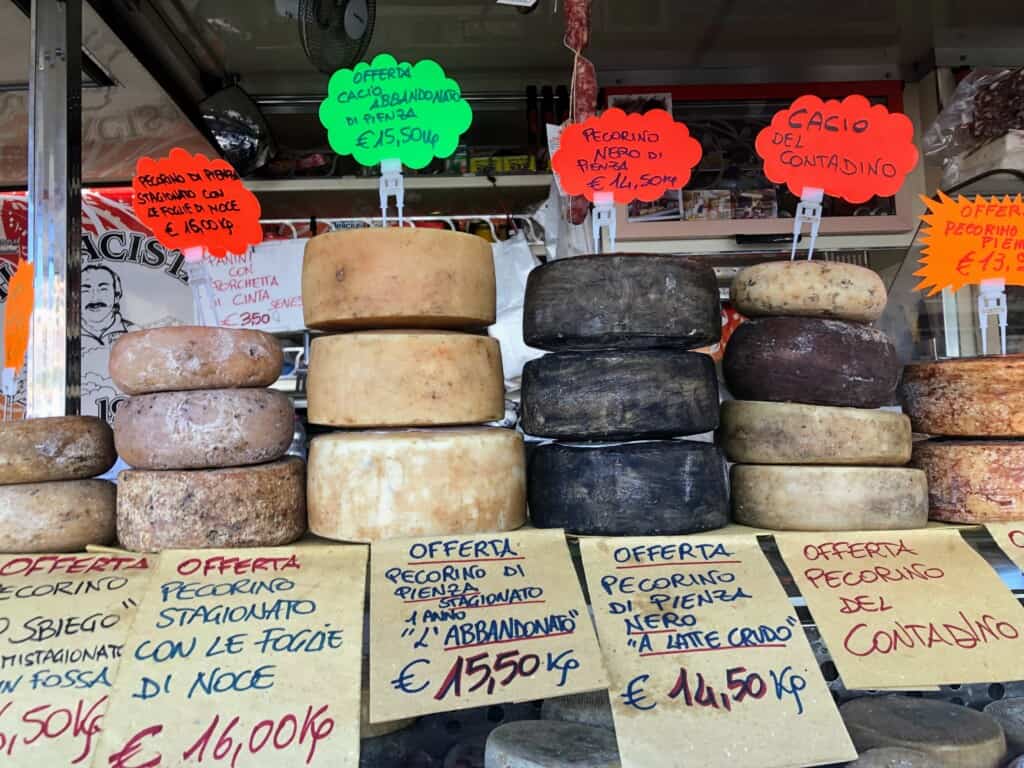
Best For: Cheese boards and with honey and jams before a meal.
There are several kinds of pecorino in Italy. There are fresh, semi-hard and hard varieties, made primarily with sheep’s milk but also combined with cow and goat milk as well. The most famous pecorino cheese is from Tuscany, Sicily and Sardinia, aged anywhere from a couple of months to over a year.
Fact: All pecorino cheese is naturally lactose free.
Pecorino sardo from Sardinia, unlike other varieties, is made from 100% sheep’s milk cheese.
The Tuscan DOP pecorino is slightly more mild and delicate than the Sardinian version because it’s often made with a combination of sheep’s and cow’s milk and made from the rennet of a calf instead of a goat. You will also find it flavored with things like truffles, red peppers or pistachios or aged in special caves or grape leaves.

We Recommend: Pienza and the surrounding Val D’Orcia area for Tuscan pecorino cheese. The best of the best is made from the sheep grazing the lush hills of this area of Tuscany.
Bring It Back: Pecorino makes a great souvenir or gift to bring back. Head to one of the many cheese shops in Tuscany and ask to have your pecorino vacuum packed for transportation into foreign countries such as the US.
Scamorza
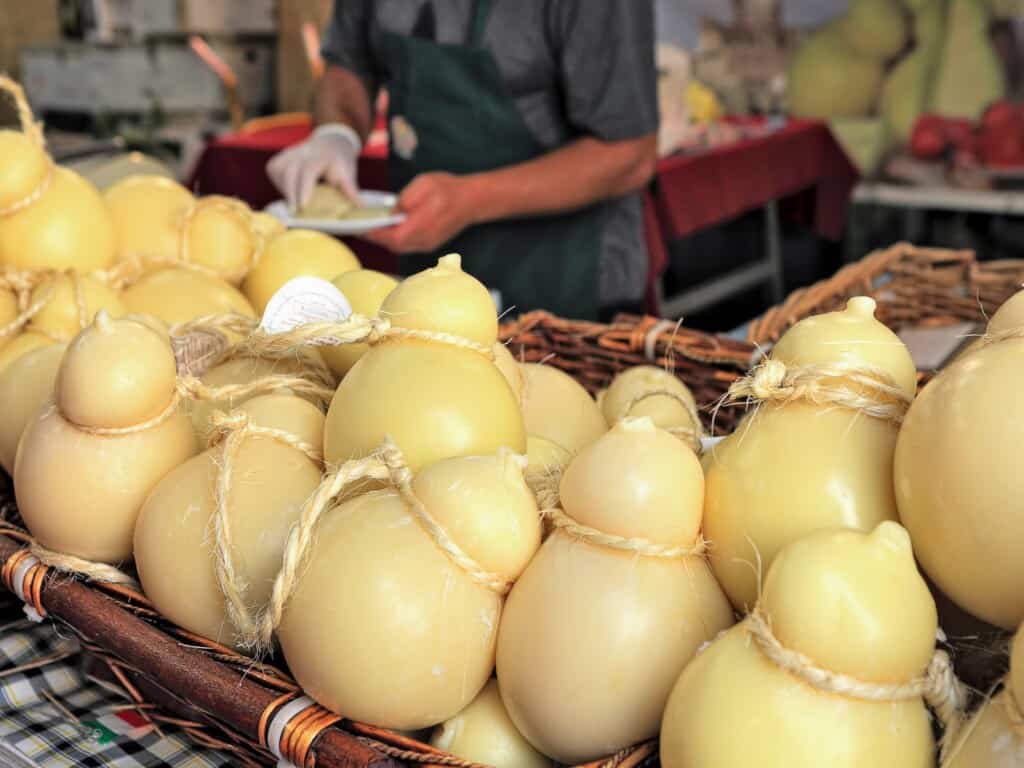
Best For: Melting in foods like arancini and eating on its own as an aperitivo.
Scamorza is a kind of aged mozzarella produced in Southern Italy (mostly Campania, Molise, Basilicata and Abruzzo. The scamorza is stretched out and formed into a tear-drop shape and then hung and aged for about two weeks, creating a harder, white cheese, similar to provolone but with a nuttier and more acidic flavor. The name scamorza is derived from the Italian capa mozza, meaning ‘be-headed’, referring to the shape of cheese hanging like a head. Pleasant, right?
Good To Know: You can also find scamorza affumicata or smoked mozzarella that is further aged with smoke, adding a depth of earthy flavor and turning the cheese a pale yellow color.
Asiago

Best For: Adding to sandwiches and enjoying as an aperitivo with a good beer.
Asiago is made between the Asiago Plateau (from where the cheese gets its name) and Trentino’s highlands in Northern Italy. It’s a cow’s milk cheese that you can either enjoy fresh, aged just a few weeks, or aged for nearly a year. Like most cheeses, the texture becomes harder and more intense as it ages. Younger varieties are mild and soft, ideal for melting. The oldest Asiago can even be grated atop pastas and rice much as parmigiano-reggiano would be.
Hard Italian Cheese
Hard Italian cheese means it has been aged for a long time, typically over a year. The aging period will vary, depending on the type of cheese. Stagionato is how we say aged in Italian but when referring to very old cheeses, you would say molto stagionato.
Pecorino Romano

Best For: Grating onto pasta dishes such as carbonara, cacio e pepe and pasta alla gricia. It’s also very good with fresh fava beans in the spring.
Pecorino Romano is an aged DOP sheep’s milk cheese from Lazio, similar to the consistency of parmigiano-reggiano. It’s one of Italy’s oldest cheeses, dating back to ancient Roman times when it was developed to last for long journeys during wartime.
Although still associated and used primarily in Rome’s most famous pasta dishes, only 4% is still produced in Lazio. Today, it’s mostly made in Sardinia according to the traditional methods of production.
Nice To Know: Pecorino Romano can be substituted in any dish that calls for parmigiano-reggiano. The rind can also be added to soups and stews.
Parmigiano-Reggiano

Best For: Eating with a glass of wine for an aperitivo, dessert or for finishing pastas and other first course meals.
Parmigiano-reggiano is one of the most famous and prized cheeses in all of Italy, not to mention the world. It’s aged for a minimum of 12 months (and upward of 40!) and only produced in the provinces of Reggio Emilia, Modena, Bologna and Mantua from the milk of cows following a very strict diet. Because of this, the cheese takes on a wide range of flavors from spicy and salty to briny and full of umami.
The younger versions of parmigiano-reggiano are smoother and more mild, better suited with a glass of wine while the aged versions are much harder, more crumbly and perfect for finishing pastas, risotto and eating for dessert.
Fun Fact: Parmigiano-reggiano is the first food product in Italy to become DOP, awarded by the Duke of Parma in the 17th century.
To make a single wheel of cheese, it takes 55 liters of milk, afterwhich go through strict quality inspections by a consortium who tap each wheel with a little hammer. By only the sound the cheese makes when gently knocked, the experts can tell if it’s a dud or not.
Good To Know: Parmigiano-reggiano is another lactose-free cheese.
Because of all these things (small geographical location, special milk, strict inspection, specific production guidelines, long maturation), the cheese costs a lot of money. This being said, you usually don’t eat it in large quantities but rather, use it sparingly as a finishing cheese or savoring in small nibbles for aperitivo or dessert.
Fact: Parmigiano-reggiano is only made from April through November.
Make sure you know How to Pronounce Parmigiano.
Grana Padano

Best For: Aperitivo or for finishing rice, pasta and other first course dishes.
Grana Padano, while easily confused with parmigiano-reggiano, is quite a different cheese. This cow’s milk cheese is similar in texture (crumbly and hard) and made in a similar way but it’s only aged for a minimum of 9 months. Unlike parmesan, it’s made in a much larger geographical area in Lombardy, does not go through such a rigorous inspection and the cow milk used to make grana does not come from cows on special diets. For all these reasons, grana is considered much less precious than its friend parmigiano-reggiano, costing only a fraction of the price.
Nice To Know: Grana Padano can be substituted in place of parmesan-reggiano in any recipe.
Other Italian Cheeses By Region

| Italian Cheese | Region Of Origin | Type/Description |
| Monte Veronese | Veneto | Semi-hard cow’s milk |
| Accasciato | Tuscany | Semi-hard sheep’s milk or combined with cow’s milk |
| Fossa di Sogliano | Emilia-Romagna | Semi-hard sheep’s milk or combined with cow’s milk |
| Pecorino pepato | Sicily | Sheep’s milk cheese dotted with black peppercorns |
| Provolone del Monaco | Campania | Raw cow’s milk aged cheese |
| Bagoss | Lombardy | Aged cow’s milk cheese with saffron |
| Fiore Sardo | Sardinia | Various aged 100% sheep’s milk cheese |
| Casu marzu | Sardinia | Sheep’s milk cheese flavored with fly larvae (NOTE: It’s illegal to sell or consume this cheese although you can find it on the black market in Sardinia) |
| Pecorino Siciliano | Sicily | Semi-cooked hard raw sheep’s milk cheese |
| Provolone Valpadana | Northern Italy | Cow’s milk cheese made in a sweet, aged and smoked variety |
| Cacioricotta | Puglia | A fresh cheese made from crossing the techniques of ricotta making and regular cheese production |
| Primo Sale | Sicily, Sardinia | Softer sheep’s milk cheese, matured for a short period after being salted |
| Caprino | Molise (various types made throughout all of Italy) | Raw goat’s milk cheese with a firm crust and soft center |
| Dolcelatte | Lombardy | A blue cheese made from cow’s milk matured for 2-3 months |
| Bitto | Lombardy | Semi-hard cow’s milk cheese similar to gruyère |
| Ragusano | Sicily | Semi-hard cheese made from milk from the locally bread Modicana cow |
| Caciocavallo Silano | Basilicata | Cow’s milk cheese with a mild, salty flavor and a smooth, firm texture |
| Stracciata | Molise | Cow’s milk cheese that is stretched into ribbons that are folded or braided |
| Ricotta Salata | Sicily | Aged version of fresh, traditional ricotta |
| Ubriaco | Veneto | Cow’s milk cheese that is soaked in prosecco |
| Bel Paese | Lombardy | Semi-hard cow’s milk cheese |
| Tomino | Piedmont | A small and round compact, soft, cow’s milk cheese |
| Montasio | Friuli-Venezia Giulia | Soft to semi-hard raw cow’s milk cheese is matured for different lengths of time |
| Provola | Campania | A smaller version of provolone made with cow’s milk made also smoked |
| Fior di latte | Campania | Mozzarella made with cow’s milk |
| Castelmago | Piedmont | Mixed milk blue cheese |
| Bruss | Piedmont | Fermented soft sheep’s milk cheese |
| Brescenza | Lombardy | Soft cow’s milk cheese aged for a week |
| Podolico Caciocavallo | Puglia | Made from the Podolian cows which only produce a very little quantity of milk at certain times during the year, making it one of the most expensive cheeses you can buy |
| Puzzone di Moena | Trentino-Alto Adige | Semi-hard cow’s milk cheese matured in caves |
| Bra | Piedmont | A hard cheese made from cow’s milk or mixed |
| Piave | Veneto | Hard cow’s milk cheese |
| Montebore Tiered | Piedmont | Raw cow and sheep’s milk cheese protected by the Slow Food Presidium. |
| Manteca | Puglia / Molise | Fresh cow’s milk cheese with a firm outer crust and soft and creamy inside. |
| Alta Badia | Trentino-Alto Adige | Cow’s milk cheese similar to gruyère, aged for around 6 months |
| Jamar | Friuli-Venezia Giulia | Raw semi-hard, crumbly cow’s milk cheese left in karst caves |
| Formadi Frant | Friuli-Venezia Giulia | Semi-hard cheese made from oddly shaped or defective cheese leftovers that are mixed with cream and matured in wooden molds |
| Padraccio del Pollino | Basilicata | Unpasteurized goat’s milk cheese |
| Casciotta d’Urbino | Le Marche | Semi-hard sheep and cow’s milk cheese of Urbino |
| Butirro | Calabria | Kneaded curd cheese with an outer shell and a creamy, buttery soft inside. |
Best Italian Cheese For Pastas and Rice

There are two main ways to add cheese to pasta. You can either sprinkle it on top to add an extra level of flavor before serving or it can be cooked directly in with the pasta sauce.
If you’re grating it on the top, you will want to use a firm, sharp cheese like parmigiano-reggiano or pecorino romano.
Softer cheeses such as ricotta or stracchino can be stirred in with the pasta sauce or with the warm pasta. It adds an element of creaminess and richness just as butter does.

Fact: In Italy, ricotta is not used in lasagna but rather, added to simple sauces such as pasta alle zucchine as a way to enrich it with extra flavor and creamy texture.
If you want to add a semi-hard cheese into a pasta, it’s best added directly into a besciamella or a white sauce.
Good To Know: The type of pasta shape is just as important as the cheese you choose. Shorter pasta works better than long pasta like spaghetti because the cheese doesn’t stick as well.
If you choose to add mozzarella di bufala to pasta, never cook it! It should be tossed with the cooked pasta and never reheated in a pan.
Best Italian Cheese For Aperitivo
Aperitivo in Italy is a tradition of having a small drink before dinner with a small nibble, oftentimes with local cheeses.
Let’s be honest, really all cheese is excellent to drink with a glass of wine. Each region in Italy has their favorites but some of the most prized are grana padano, parmigiano-reggiano, pecorino cheese (especially in Tuscany, Umbria, Sardinia and Sicily), and Fontina and Asiago up north.
Best Italian Cheese For Dessert
Sharp, older cheeses that are pungent and extra rich are ideal for enjoying in place of dessert in Italy. The concept of eating cheese for dessert is more of a Northern Italian tradition because this is where most of these aged cheeses are produced.
Excellent choices with a sweet dessert wine are:
- 30+ month parmigiano-reggiano
- gorgonzola piccante
- aged fontina
Good To Know: Mascarpone and ricotta cheese is enjoyed for dessert in Italy but rather than eating as it, it’s incorporated into other desserts such as tiramisù, ricotta cake or gelato.
Where To Eat The Best Cheese In Italy

There is really no specific place to enjoy the best cheeses in Italy but rather, you should enjoy cheese regionally as you travel. This means that you should eat the specialty of that region.
Tasting Mozzarella: Is one of our top food experiences. Read about where to taste mozzarella in What is Mozzarella di Bufala (Buffalo Mozzarella)? – Solving the Great Italian Mystery.
In Sardinia, indulge in their luscious cheese boards and long aperitivo hours while up north you should eat cheese for dessert.
If you want to purchase the best regional cheese, go to a cheese shop rather than a supermarket as the selection will be more curated and generally speaking, of higher quality.
Italy is full of food fairs, known as sagre in Italian and you can be sure cheese is a star ingredient at many. Every two years is the largest cheese festival in Bra (Piedmont) with various events, tastings and shows. You can watch a wheel of parmigiano-reggiano being cracked open, partake in the cheese wheel race or sign up for cheese tastings and cooking demonstrations.
For Tuscan Travelers: Every August Pienza holds the annual sagra di pecorino, a food festival celebrating the regional sheep’s milk cheese.
Italian Cheese FAQ
The most popular Italian cheeses include mozzarella, parmigiano-reggiano, grana padano, ricotta and pecorino cheese. Italian cheeses can be made with sheep, cow, goat or water buffalo milk and they are either soft, semi-hard or hard.
Pecorino Romano is the most famous cheese from Rome although the majority of it is now made in Sardinia according to the original technique of production. It’s tradition to eat pecorino romano with fresh fava beans on the first day of May in Rome.
Parmigiano-reggiano is considered the king of all cheeses because of the strict laws that encompass its production.
Italians love parmigiano-reggiano, pecorino, mozzarella and ricotta in particular.
Caciocavallo Podolico is one of the most expensive cheeses because it’s made from the milk of the Podolica cattle which produce very little milk.


